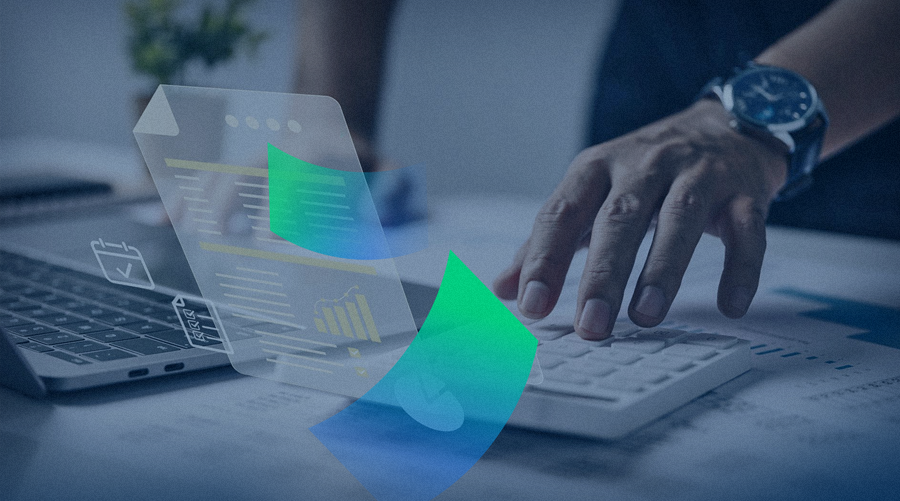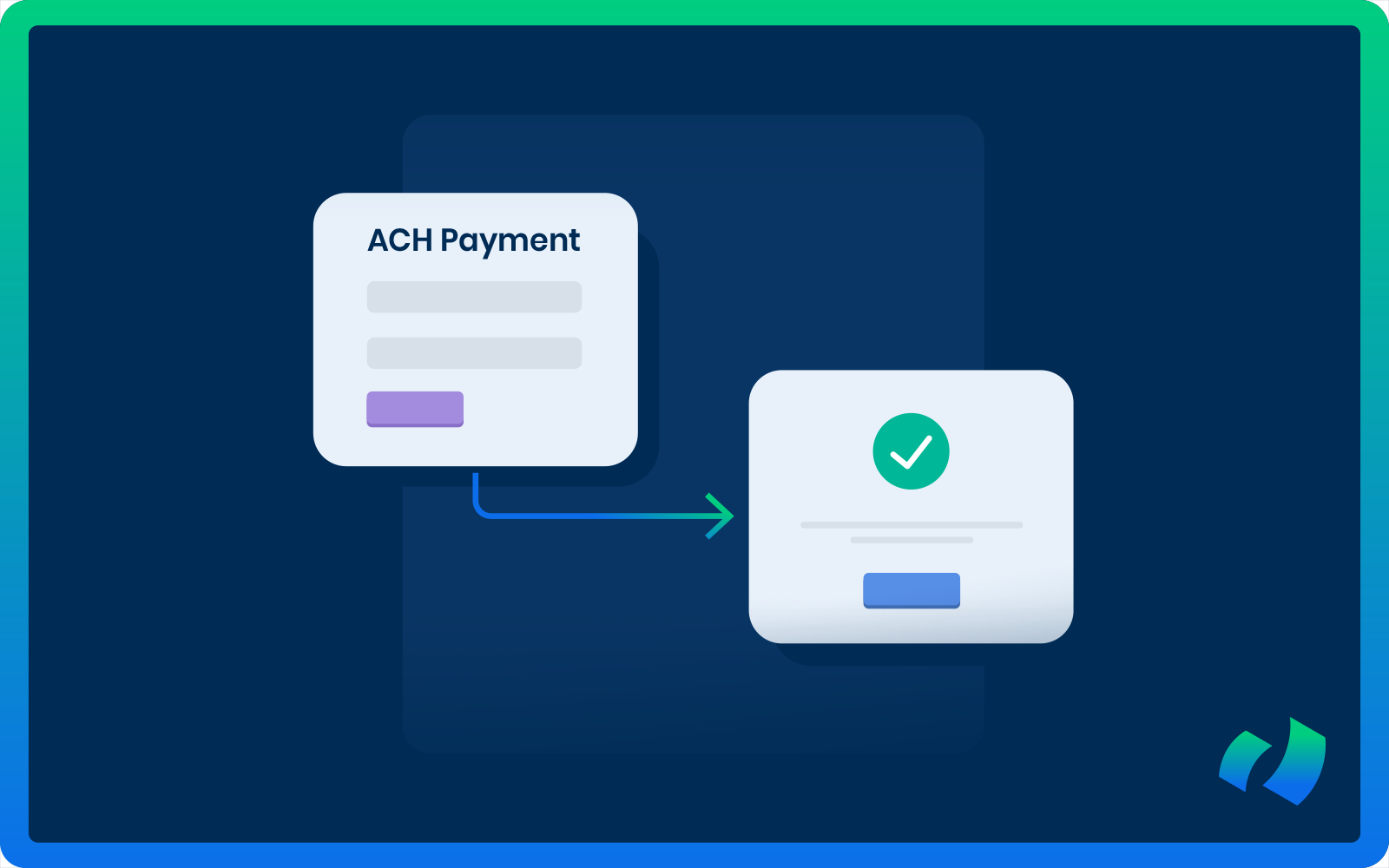ACH payments, or Automated Clearing House payments, are electronic transfers that enable businesses and individuals to move funds between bank accounts. They are a popular alternative to traditional paper checks and credit card transactions, offering faster processing times and lower transaction fees.
ACH payments play a crucial role in managing everything from large-scale payroll distributions to automated monthly bill payments, showcasing their versatility and reliability.
This guide delves deep into what ACH payments are, how they function, their benefits, and their integral role in modern finance. It provides a clearer understanding of why they are favored in various B2B transaction contexts.
What Is an ACH Payment?
ACH payments form an essential backbone of the U.S. financial ecosystem, seamlessly facilitated by a high volume of daily transactions.
ACH payments are electronic payments made through the Automated Clearing House Network, managed by the National Automated Clearing House Association (NACHA). This system allows banks and other financial institutions to send and receive funds electronically, bypassing the need for paper checks, cash, wire transfers, or credit card networks.
Historically, the ACH network was established in the early 1970s in response to the increasing volume of paper checks. It was designed to improve the efficiency and reliability of payments by reducing the physical movement of paper, thereby expediting transaction speeds and enhancing security. Today, the network processes billions of payments annually, including direct deposits of salaries, social security benefits, mortgage and utility payments, as well as insurance premiums and tax refunds.
Key players in the ACH network include: Originating Depository Financial Institutions (ODFIs), which are banks or financial institutions that initiate ACH transfer requests; Receiving Depository Financial Institutions (RDFIs), which are banks or institutions that receive ACH entries; and ACH Operators, central clearing facilities that act as intermediaries between ODFIs and RDFIs. These operators are typically the Federal Reserve or The Clearing House.

Types of ACH Payments
ACH payments can be categorized into two main types: ACH credits and ACH debits. Both are widely used across various financial transactions but function differently. Understanding these types is crucial for assessing how ACH payments can be utilized in various scenarios.
ACH Credits
An ACH credit occurs when funds are pushed into a bank account. The initiating party sends money to the recipient’s account. This method is commonly used for the following purposes:
- Payroll payments: Employers often use ACH credits to directly deposit salaries into employees’ bank accounts.
- Government benefits: Social security, tax refunds, and other government disbursements are typically paid through ACH credits.
- Business-to-business payments: Companies frequently use ACH credits to pay their vendors or contractors, reducing the need for checks.
- Refunds and rebates: Companies can send money back to customers via ACH credits for returned products or promotional rebates.
ACH Debits
Conversely, an ACH debit occurs when funds are pulled from a bank account, meaning the recipient of the funds initiates the transaction to draw money from another account. ACH debits are particularly suited for the following uses:
- Bill payments: Many people set up automatic bill payments via ACH debit for utilities, mortgages, loans, and insurance premiums.
- Subscription services: Regular payments for services such as streaming, memberships, and software can be automated through ACH debits.
- Tax payments: Businesses and individuals can authorize tax payments to be pulled from their accounts close to the due date.
- Charitable donations: Regular donations to charities can also be set up as recurring ACH debit transactions.
How do ACH payments work?
The ACH network acts as the backbone of the payment process by connecting financial institutions such as banks, credit unions, and other organizations. When an ACH payment is initiated, the sender’s bank sends a request through the ACH network to transfer funds from their account to the recipient’s account. The transaction undergoes several steps before reaching its final destination.
Firstly, the originator or sender initiates an ACH payment by submitting bank account information, such as the recipient’s account number and routing number, to their bank. This information is then sent through the ACH network to the Automated Clearing House Operator, which serves as a central clearinghouse for all ACH transactions.
Next, the Automated Clearing House Operator sorts and processes the transaction based on its type (credit or debit) and destination bank. The funds are then transferred from the sender’s bank account to the Operator’s settlement account before being sent to the recipient’s bank. Once received by the recipient’s bank, the funds are deposited into their account.
The process of ACH payments is streamlined to ensure security and efficiency:
- Transaction initiation: A business or individual authorizes an ACH payment, which can be either a debit (pulling funds from an account) or a credit (pushing funds into an account).
- Submission to ODFI: The payment originator submits the transaction details to their bank, known as the Originating Depository Financial Institution (ODFI).
- Batch processing: The ODFI aggregates multiple ACH requests into batches and forwards them to an ACH Operator at predetermined intervals throughout the day.
- Clearing: Once received, the ACH Operator sorts the batches and directs each transaction to the appropriate Receiving Depository Financial Institution (RDFI).
- Account crediting or debiting: The RDFI then processes the incoming transactions, resulting in the funds being credited to a receiver’s account or debited from it, as dictated by the nature of the transaction.
This process exemplifies a blend of modern electronic banking and traditional fund transfer systems, ensuring that ACH payments are both reliable and scalable. This system is capable of handling high-volume business transactions and individual needs efficiently.

Benefits of Using ACH Payments
ACH payments offer a myriad of benefits that make them a popular choice for both businesses and individuals. Here are a few key advantages:
- Cost Efficiency
- Security
- Convenience
- Accessibility
Cost efficiency
One of the most significant advantages of ACH payments is their cost-effectiveness. They typically incur lower fees than credit card networks and wire transfers, which can involve steep processing fees. For businesses, this reduces transaction costs, particularly with large volumes of payments. For consumers, this translates to savings on bill payments and fund transfers.
Security
ACH payments are governed by strict regulations and are monitored by the National Automated Clearing House Association (NACHA), which sets rigorous security standards to protect against fraud. Security features such as authentication, encryption, and transaction integrity checks provide a higher level of security than traditional checks and many other digital payment forms.
Convenience
ACH is particularly advantageous for regular and recurring payments. Employers can process payroll disbursements efficiently, while consumers enjoy the ease of automatic bill payments from their bank accounts, eliminating the need to write checks or make manual payments monthly.
Accessibility
The ACH network provides an inclusive financial tool, making it accessible and beneficial to businesses of all sizes, from small startups to large corporations.
Challenges of ACH Payments
While ACH payments offer many benefits, there are also some challenges and considerations to keep in mind when using them:
- Processing Times
- Errors and Fraud
- Regulatory Compliance
Processing times
One of the more significant issues with ACH is the processing time, as transactions are not instant. Although same-day ACH transactions have improved processing speeds, standard ACH payments can still take 1-2 business days to process. This delay can be problematic in situations where immediate fund transfer is required.
Errors and fraud
While ACH payments are generally secure, they are not immune to fraud or human error. Incorrect account information can lead to misdirected funds. Although fraud rates are low, the large volume of daily ACH transactions makes them a potential target for fraudulent activities.
Regulatory compliance
Navigating the ACH regulatory environment can be complex, especially since rules may vary by transaction type and state laws. Compliance requires staying current with regulations from the National Automated Clearing House Association (NACHA), as well as potential oversight from federal and state bodies. Failure to comply can result in significant fines and operational setbacks, impacting business operations.

ACH Payments FAQ
1) Are ACH transfers safe?
Yes, ACH transfers are generally safe. They are regulated by the National Automated Clearing House Association (NACHA) and require adherence to strict operational and security standards. Additionally, federal regulations such as Regulation E offer further protections to consumers against unauthorized transactions, making ACH a secure option for both sending and receiving funds.
2) How long do ACH transfers take?
Typically, ACH transfers take 1-2 business days to process. This can vary depending on the timing of the transaction and the policies of the participating institutions. Recent implementations of same-day ACH processing capabilities have significantly expedited this timeline for eligible transactions, allowing for faster funds availability.
3) Can ACH payments be reversed?
Yes, ACH payments can be reversed under specific circumstances, such as errors (e.g., duplicate transactions or incorrect dollar amounts) or unauthorized transactions. Reversals must typically be initiated within five business days, and the process is strictly regulated to protect against fraud.
4) What are the differences between ACH and wire transfers?
ACH and wire transfers are both methods of electronic funds transfer, but they have key differences. Wire transfers are generally faster, usually completed within hours, and once made, are irreversible. They are also more expensive compared to ACH transfers. ACH payments, on the other hand, are processed in batches, which is why they take longer. However, they are more cost-effective and are widely used for routine, non-urgent transactions.
5) Who uses ACH payments?
ACH payments are used by a wide variety of entities, including businesses, government agencies, and individuals. Businesses frequently use ACH for payroll, vendor payments, and other transactional needs. Government uses include tax refunds and other disbursements. Individuals often use ACH for bill payments, direct deposits from employers, and personal transfers.
6) Are there any special types of ACH transactions?
Beyond basic credits and debits, specialized forms of ACH transactions are designed to meet specific needs, including:
- Same-Day ACH: This service allows for the completion of ACH credits and debits on the same day, useful for urgent payments.
- International ACH transactions (IAT): These facilitate payments crossing international borders, complying with both U.S. law and the laws of the recipient’s country.
- Re-presented check entry (RCK): When a check is returned due to insufficient funds, the merchant can re-present the check electronically using an ACH transaction.
Each type of ACH transaction adheres to specific regulatory requirements and operational guidelines, ensuring safe and efficient processing. Understanding these different types and their applications can help businesses and individuals choose the most appropriate method for their payment needs.








